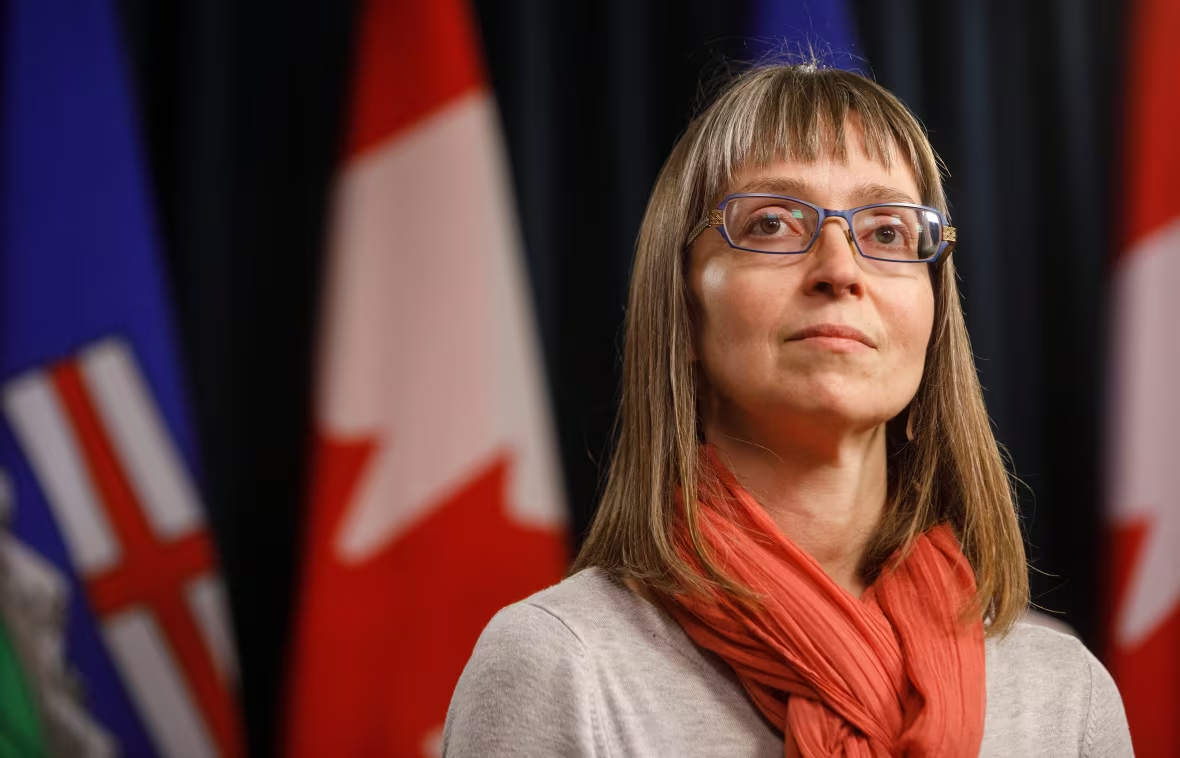Why those under 40 now make up the majority of COVID-19 cases in Alberta
More likely to be social, younger Albertans now account for 60 per cent of Alberta cases

Younger people have become the majority of Alberta's active COVID-19 cases.
In her regular update Friday, Alberta's chief medical officer of health Dr. Deena Hinshaw said that in the weeks since reopening, there has been an increase of infections among younger Albertans.
She said it's a reminder that the relaunch has once again increased risk of exposure.
"Over the past few weeks province-wide, we have begun to see a younger demographic testing positive for COVID-19," Hinshaw said. "Sixty per cent of our currently active cases are under the age of 40. And we are seeing a particular increase in those between 20 and 29."
Vanessa Meier-Stephenson, an expert in infectious disease at the University of Calgary, said the uptick is not completely unexpected but remains concerning.
"It certainly could be related to groups getting together, a little bit of social distancing fatigue," she said. "The younger population is much more social.
"We are social creatures and we want to be out there and interacting with other people."
Meier-Stephenson said the upsurge in cases in the U.S. suggests that any time the restrictions are eased, the number of cases will rise.
"And if we're not showing symptoms, we get a little more laissez-faire and just a little less concerned about it," she said.
Two distinct risks
Infectious disease expert Craig Jenne, a member of the Canadian Society for Immunology, agreed that younger people may think they're less vulnerable — and said that poses two distinct risks.
"This demographic is at reduced risk of severe disease and poor outcome, but there still is a risk. We have seen a number of cases here in Canada where otherwise healthy young people have succumbed to this virus. So, it's important that people understand they are not indestructible," he said.
"The bigger issue though is that these people can then transmit the virus to others."

Jenne said young people are also just more likely to go out.
"These are the people who are more likely to go out into the community and to interact with others," he said. "So I think in general the older cohort of patients tend to not only stay home a little bit more but also tend to follow the guidelines more closely, which ends up protecting them."
It's also typically the younger demographic that will be going back into workplaces that might have more difficulty establishing a physical separation, Jenne said.
"So, it can be the activities, it's also how closely the guidelines are followed," he said. "And when people get a little more lax — go out for example to dinner or to other establishments and don't maintain physical distancing — there's an increased risk of getting an infection."
Jenne said physical distancing is the thing that has kept the virus at bay in Alberta so far.
"As we ease those, this is how the virus is going to move," he said. "We've seen that in, for example in a number of U.S. states, as restaurants and bars start to open up, we see a predicted spike in cases. So we are anticipating as people start to resume semi-normal activities that we will see, unfortunately, an uptick in infection."
Latest numbers
On Friday, Hinshaw said there have been no cases of COVID-19 linked to recent Black Lives Matter protests in Calgary and Edmonton, adding anyone going to the protests should wear a mask and consider using the ABTraceTogether app.
Almost 8,000 Albertans were tested for the disease in the last 24 hours, bringing the total number of tests done in the province to more than 325,000.
The province has 386 active cases with 53 patients in hospital, including six in intensive care. The number of deaths remains at 149.
Hinshaw warned Albertans that even though Phase 2 of the reopening is underway — permitting more businesses and services to open and larger groups of people to gather — personal safety measures are still necessary.
"It is important for all of us to remember that this virus is not gone," she said. "COVID-19 is still circulating in our communities and will do so for many months to come."
With files from Elise von Sheel